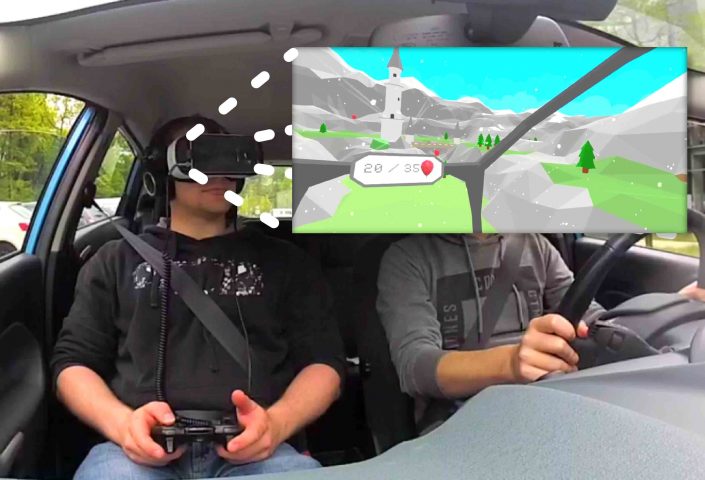CarVR: Enabling In-Car Virtual Reality Entertainment
Mobile virtual reality (VR) head-mounted displays (HMDs) allow users to experience highly immersive entertainment whilst being in a mobile scenario. Long commute times make casual gaming in public transports and cars a common occupation. However, VR HMDs can currently not be used in moving vehicles since the car’s rotation affects the HMDs sensors and simulator sickness occurs when the visual and vestibular system are stimulated with incongruent information. We present CarVR, a solution to enable VR in moving vehicles by subtracting the car’s rotation and mapping vehicular movements with the visual information. This allows the user to actually feel correct kinesthetic forces during the VR experience. In a user study (n = 21), we compared CarVR inside a driving vehicle with the baseline of using VR without vehicle movements. We show that the perceived kinesthetic forces caused by CarVR increase enjoyment and immersion significantly while simulator sickness is reduced compared to a stationary VR experience. Finally, we explore the design space of in-car VR entertainment applications using real kinesthetic forces and derive design considerations for practitioners.
Project Video
Project Images
Publications
Philipp Hock, Sebastian Benedikter, Jan Gugenheimer, and Enrico Rukzio. 2017. CarVR: Enabling In-Car Virtual Reality Entertainment. In Proceedings of the 2017 CHI Conference on Human Factors in Computing Systems (CHI ’17). ACM, New York, NY, USA, 4034-4044. DOI: https://doi.org/10.1145/3025453.3025665






